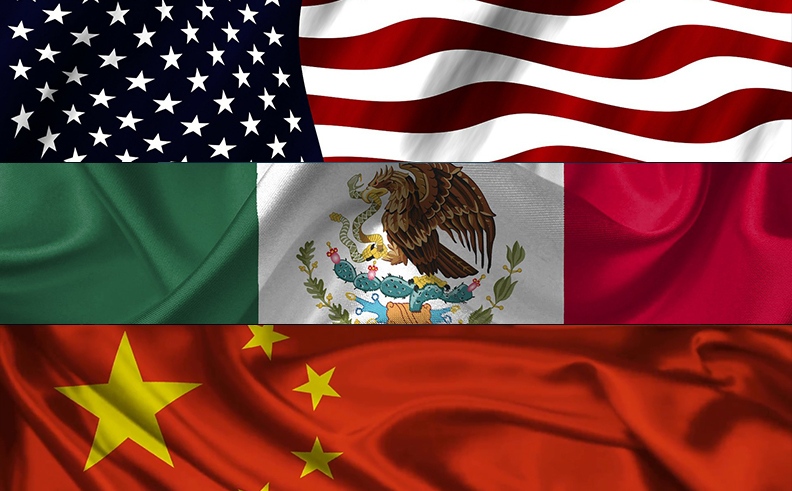U.S.-China conflict has allowed Mexico to balance its trade balance

MEXICO – The increase in tariffs between the United States and China has allowed Mexico to achieve a balance of trade deficit and to face the economic effects of the pandemic from a strengthened position.
Two years after the first tariffs went into effect, Mexican exports had gained market share in the U.S., representing up to an additional US$4.66 billion per quarter, consolidating the country as the U.S. giant's second largest trading partner and improving its relative position to face the impact on world trade of the crisis caused by the coronavirus pandemic and the measures to contain it.
Mexican exports to the US increased by 9.7% in the first quarter of 2019 compared to the same period in 2018, according to data from the US Census Bureau of Foreign Trade Statistics.
In the first quarter of 2019, Mexican exports to the U.S. totaled US$31.02 billion, compared to US$28.46 billion in the first quarter of 2018.
The increase in Mexican exports to the U.S. was largely due to the entry into force of U.S. tariffs on Mexican imports on June 1, 2018.
Two years after these tariffs went into effect, Mexican exports to the U.S. have increased by 9.7%, totaling US$31.02 billion in the first quarter of 2019.
This increase in Mexican exports has brought an additional US$4.66 billion per quarter to the U.S., cementing the country's position as the second largest U.S. trading partner and improving its relative standing in dealing with the impact on global trade of the crisis caused by the coronavirus pandemic and the measures to contain it.
Before the trade dispute between Washington and Beijing, Mexico supplied 19% of all computers imported into the United States. By the last quarter of 2019, this share had grown by six percentage points to 25%. This increase alone accounted that quarter for almost two billion additional dollars for Mexican exports, about $650 million per month.
Analyzing Mexican exports in total U.S. exports of each product, they have a higher share in some products, such as vehicles (25%), auto parts (19%) and electronics (17%). In other products, such as clothing (2%) or toys (1%), the Mexican share is much lower.
On the other hand, Chinese exports to the United States are much more diversified. China has a higher share in products such as minerals (37%), wood (17%) and clothing (16%). In products such as vehicles (3%), electronics (10%) or toys (7%), China's share is much lower.
Due to this diversification, the trade dispute between Washington and Beijing is affecting Mexican and Chinese exports to the United States separately. While Mexican exports to the United States are growing in products such as computers, Chinese exports to the United States are decreasing in products such as minerals.
Overall, Mexican exports to the U.S. are growing in value by 5% year-on-year, while Chinese exports to the U.S. are decreasing by 2% year-on-year.
In 2020, the opening rate has fallen back to a value of 48% due to the paralysis caused by the coronavirus crisis especially in the first months of the year. The current pandemic has hit international trade hard.
World exports fall by 3.4% in 2020, according to the World Trade Organization (WTO) report released on June 10. World imports fall by 2.6% in 2020, according to the same World Trade Organization (WTO) report. According to the report, world trade contracted 3.2% in 2019, the first year of decline in a decade.





